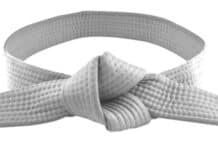
Ever since the days before BJJ, people have been trying to find the best way to get into shape for fighting. Every fighting system has it’s own approach to physical improvement. Even nowadays running is a staple of boxing conditioning, whereas high repetition bodyweight work marks wrestling. In modern MMA competition, strength and conditioning training has been taken to new heights. Yet, there is still a discipline that is too often overlooked, even though it offers the most bang for the buck when it comes to physical training methodology. Enter gymnastics.
Granted, gymnastics is not just a training method, but an Olympic sport in itself. Actually, it is one of the staples of the Olympics. Gymnastics is a complex sport incorporating every physical ability the body is capable of. It devotes attention to strength, endurance, flexibility, mobility, positional awareness, movement patterns, you name it. Not only can it develop each and every one of these abilities, it can develop them simultaneously. The only drawback is that it requires longer time to develop the associated physical qualities compared to more conventional methods.
Gymnastics 101
Performed by both men and women at a variety of levels, gymnastics has its roots in ancient Greece. Literally meaning “to exercise naked’ the term referred to any type of physical exercise done at the gymnasiums. And yes, males did, originally, exercise without any clothes on. Formalization of the sport was done by the Romans, who adopted the exercises after conquering Greece. Even then, gymnastics were seen as a useful tool for combat preparation, as demonstrated by the Roman legions that used the sport as the main tool for physical conditioning.
Out of the exercise associated whit modern gymnastics, tumbling and vault are the only disciplines that were practiced in the earliest days of the sport.
Modern gymnastics consists of three divisions – artistic, rhythmic gymnastics and trampoline. Artistic gymnastics (for men) is organized into six main events: floor, pommel horse, vault, rings, parallel bars and horizontal bar. There’s also a discipline that combines these events into one routine. Women that compete in artistic gymnastics have to master the balance beam, the vault, floor, uneven bars and a combination of the above.
Rhythmic gymnastics is a female only branch of gymnastics. The tools used by the participants determine the names of the events: rope, hoop, ball, clubs and ribbon.
Trampoline and tumbling are done by both male and female athletes. Both are Olympic disciplines as well.
Structure of gymnastic conditioning
When it comes to gymnastic related strength training, one name in particular stands out – Coach Christopher Sommer. He is a professional gymnastics instructor and US Junior National Team coach with over 40 years of experience in the field. He’s also a renowned author, with his “Building the Gymnastic Body” book an essential read for everyone starting gymnastics.
First, let’s make something clear – we’re going to talk about strength and conditioning derived from gymnastics, not getting ready for a gymnastic event. Coach Sommer identifies two crucial categories of gymnastics when it comes to strength training. Those are Fundamental Static Positions and Fundamental Bodyweight Exercises.
As indicated by the name, Fundamental Static Positions are those held in isometric contraction for time. These exercises help an athlete build static strength through holding the body in mechanically disadvantaged positions. The best examples of static strength building exercises are the front lever, planche and L-sits.
Fundamental Bodyweight Exercises help an athlete develop basic strength. Basic strength is the ability to generate maximum physical force throughout a full range of motion in all planes. Coach Sommer’s premise is that athletes should be so strong, that even at 70% capacity they are far stronger than their opposition. A solid foundation of strength is the gateway to athletic prowess in any sport.
Just check out these gymnast’s incredible feats of strength while competing on the rings:
https://www.youtube.com/watch?v=hDt3l2s1RGI&w=640&h=380
How gymnastics can help BJJ
Gymnastic training for combat sports was first brought to the public’s eye by GSP. The ever evolving Canadian UFC superstar decided to give gymnastic conditioning a try before he retired. His premise was, that gymnasts can be good at any sport the attempt, so why not train the way they do to improve in MMA? The same holds true for BJJ.
To begin with, implementing bodyweight moves is always a good idea for grapplers. Bodyweight training means less external load, which means better recovery and more energy. But the gymnastics approach to bodyweight training is different than your usual calisthenics. Gymnastic exercise will put your body through rigorous workouts, offering countless progressions for every movement pattern. By doing so, you keep challenging yourself while keeping overtraining at bay.
The focus of many aspects of gymnastics is developing core strength, which is a very important quality for grapplers. Core strength is crucial for BJJ, allowing grapplers to move the body through different positions, as well as maintain posture and pressure. In other words, a strong core is the backbone of a strong BJJ game. Gymnastic exercises help athletes develop not only a strong core, but also an athletically functional one.
Apart from exceptional strength, gymnastics training focuses heavily on mobility. Since the static positions require joints to support the body weight in mechanically inferior positions, high level of mobility is a must. The unique manner in which gymnastics аdresses mobility is by adding weight to the exercises. This way, apart from developing mobility, there is also a build up of connective tissue, leading to increased stability as well.
Balance is another quality that gymnastic training can develop. If you’ve ever attempted to pass a great guard player, you know how important balance is in BJJ.
Hybrid training
Gymnastic strength training emphasizes upper body strength and stability above anything else. There is probably no better way to develop the ultimate athletic upper body than gymnastics.
Nevertheless, high level athletes, especially those involved in competition, often need more work on the lower body. Although gymnastics does develop explosive strength in the lower body, those seeking maximal strength should look elsewhere.
A good place to start is Olympic lifting / Powerlifting. If you take a look at Olympic weightlifters you’ll understand why you should adopt their style of training. Or as close to it as possible without burning out. Developing strong legs requires you to move heavy stuff around, which is what Olympic/power lifting offers.
So, a hybrid training methodology, one with gymnastics for the upper body and Olympic lifting for the lower, seems to be the best bet for grapplers. If you’d like to give this method a try, make sure you do the lower body lift first in the session and stay within strength parameters. By that I mean do not attempt hypertrophy training since the intensity alone will leave you gassed and you’ll soon burn out. Go for high volume (lots of sets) and low intensity (2-5 reps) and you are all set.
For the gymnastic part of the workout, coach Sommer has great guidelines in his book, but in short, stick with a 5×5 format for dynamic movements and choose more difficult exercises as you progress. For the static holds, go for half of your maximum time for any given hold. Try and superset 1 static with 1 dynamic move every session and make sure you hit all movement patterns.
There you have it. A simple, smart, and seemingly obvious approach to strength and conditioning training for grappling.
How to Fix your Low Back Pain and Never Feel it Again – Simple Exercises










































